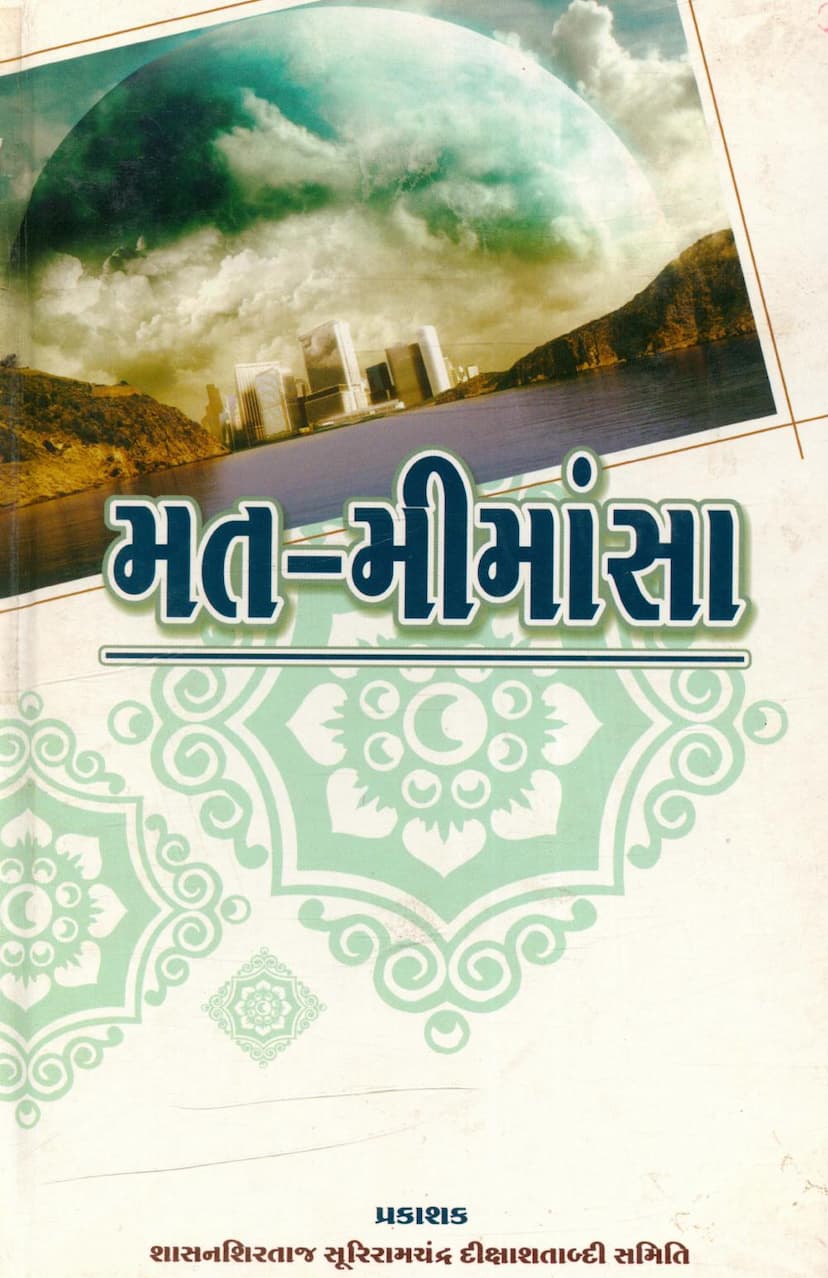Mat Mimansa
Added to library: September 2, 2025

Summary
This document is the first part of "Mat Mimansa" (मत-मीमांसा), a Jain text compiled by Acharya Shrimad Vijaykamalsurishwarji Maharaj and organized by Jainratna Labdhivijayji Maharaj. It was published by Shri Mahavir Jain Sabha, Khambhat.
The book is presented as part of the "Shasanashirtaaj Suriramchandra Diksha Shatabdhi Granthmala" (श<bos>asonashirtaaj Suriramchandra Diksha Shatabdhi Granthmala), commemorating the 100th anniversary of the initiation of Suriramchandraji Maharaj.
Key Themes and Content:
- Inspirational Foreword: The initial pages (6-10) contain a moving tribute to Acharya Shrimad Vijay Ramchandrasurishwarji Maharaj. It highlights his significant role in reviving the practice of initiating disciples, facing numerous challenges and opposition, and ultimately inspiring a large number of individuals to embrace monastic life. It also mentions the ongoing celebrations of his initiation centenary across India.
- Purpose of the Book: Page 9 explains that "Mat Mimansa" was initially created about 100 years prior to counter misleading and critical writings about Jainism by authors like Navalram, Ghanshyam, and Thakur Narayan Visanji. The goal was to provide a scholarly refutation and clarify the true teachings of Jainism. The introduction mentions that this is the first of four planned parts, though only the first has been found.
- Critique of Other Religions and Their Scriptures: A significant portion of the book, starting from Page 24, is dedicated to a detailed critical analysis of the scriptures and practices of other religions, particularly Hinduism as represented by various Puranas (Shiv Purana, Vishnu Purana, Markandeya Purana, Matsya Purana, Garuda Purana, Varaha Purana, Manusmriti, Yajnavalkya Smriti, etc.).
- The author meticulously cites verses and narratives from these texts to highlight perceived contradictions, illogical explanations, instances of violence, animal sacrifice, inappropriate sexual conduct attributed to deities, and self-serving rituals aimed at material gain (like donations to Brahmins).
- The author contrasts these narratives with the core Jain principles of ahimsa (non-violence), aparigraha (non-possession), and anekantavada (non-absolutism), portraying Jainism as a pure, logical, and ethically sound religion.
- Specific criticisms are leveled against:
- Attributed violence and sexual misconduct of deities: Numerous examples are cited from various Puranas depicting deities like Shiva, Vishnu, Brahma, and Krishna engaging in acts of violence, deceit, lust, and gross misconduct.
- Animal sacrifice and meat consumption: The Puranas are cited as promoting animal sacrifice in rituals and justifying meat-eating, which is directly contrasted with Jainism's strict adherence to ahimsa.
- Self-serving rituals and the role of Brahmins: The text criticizes Puranic injunctions that emphasize donations to Brahmins for achieving specific worldly or heavenly benefits, suggesting these practices are designed for the Brahmins' material gain.
- Inconsistencies and illogical narratives: The author points out numerous internal contradictions within and between different Puranas, questioning their authenticity and divine inspiration.
- Criticism of specific practices: The text debunks claims of salvation through mere rituals, donations, or visiting pilgrimage sites without genuine spiritual understanding or ethical conduct.
- Praise for Jain Principles and Teachers: Interspersed with the critique are expressions of respect for Jain Acharyas and the purity of Jain teachings. The book also includes "Gunstutyashtakam" (गुणस्तुत्यष्टकम्) – hymns of praise – for prominent Jain Acharyas like Shrimad Vijayanand Surishwarji (Atmaramji) Maharaj, Vijaykamal Surishwarji Maharaj, and Upadhyay Shrimad Virvijayji Maharaj, and Jainratna Labdhivijayji Maharaj. These hymns highlight their virtues, knowledge, and contributions to the Jain faith.
- The Author's Intention: The compiler and publisher express a desire for readers to gain true spiritual understanding, distinguish between right and wrong paths, and ultimately progress on the path to liberation (moksha) by studying this book.
In essence, "Mat Mimansa" is a polemical work that aims to defend Jainism by critically examining and refuting the doctrines and narratives of other religious traditions, particularly those found in Hindu Puranas. It underscores the author's belief in the superiority and purity of Jain philosophy and practices.